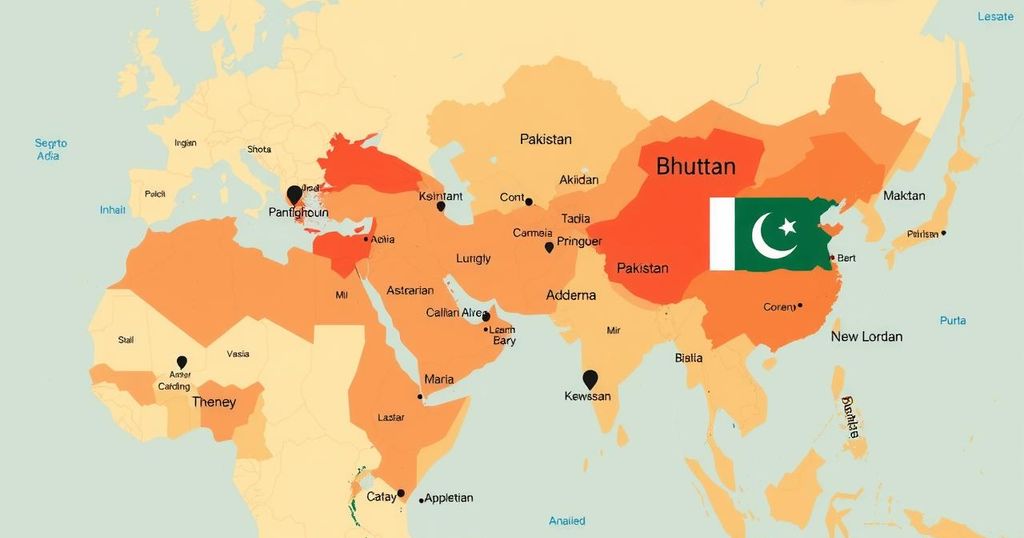A draft list from the U.S. State Department identifies 43 nations facing immigration restrictions under President Trump, categorized into red, orange, and yellow lists. Key mentions include Bhutan on the red list and Pakistan on the orange list, raising concerns among affected citizens.
A draft list purportedly originating from the U.S. State Department indicates 43 nations that may be subject to restrictive immigration policies under President Donald Trump. This list is color-coded into three categories: red signifies total bans on citizens, orange denotes significant visa restrictions, and yellow indicates a 60-day period for countries to address U.S. concerns.
Notably, the red list includes the unexpected mention of Bhutan, a nation known for its peaceful Buddhist culture. The inclusion likely stems from a 2023 immigration fraud involving Nepalese individuals posing as Bhutanese refugees, eliciting surprise among Bhutanese citizens.
Countries traditionally recognized for their disputes or terrorism concerns dominate the red list, such as North Korea, Iran, Yemen, and Syria. Additionally, Afghanistan has been added this time, while Iraq is surprisingly absent. Cuba and Venezuela also find themselves on the red list.
The orange list features Pakistan, which may cause unease among the Pakistani community in the U.S. Moreover, Russia and Belarus appear on the same list, while Ukraine surprisingly does not, despite ongoing geopolitical tensions. Other notable entries from Asia include Laos and Myanmar.
The yellow list includes various countries, including several Caribbean nations such as St. Lucia and Antigua and Barbuda, as well as more unexpected entries like Cambodia and Vanuatu. Additionally, 16 African nations, including Zimbabwe and the Democratic Republic of Congo, are noted on this list, prompting questions regarding their inclusion and citizenship processes.
In summary, the purported draft list from the U.S. State Department indicates varying levels of immigration restrictions for 43 countries, classified into red, orange, and yellow categories. The inclusion of nations such as Bhutan and Afghanistan has raised eyebrows, while traditional adversaries are listed. The implications of these classifications may significantly impact diplomatic relations and the lives of citizens from affected nations.
Original Source: www.rediff.com






